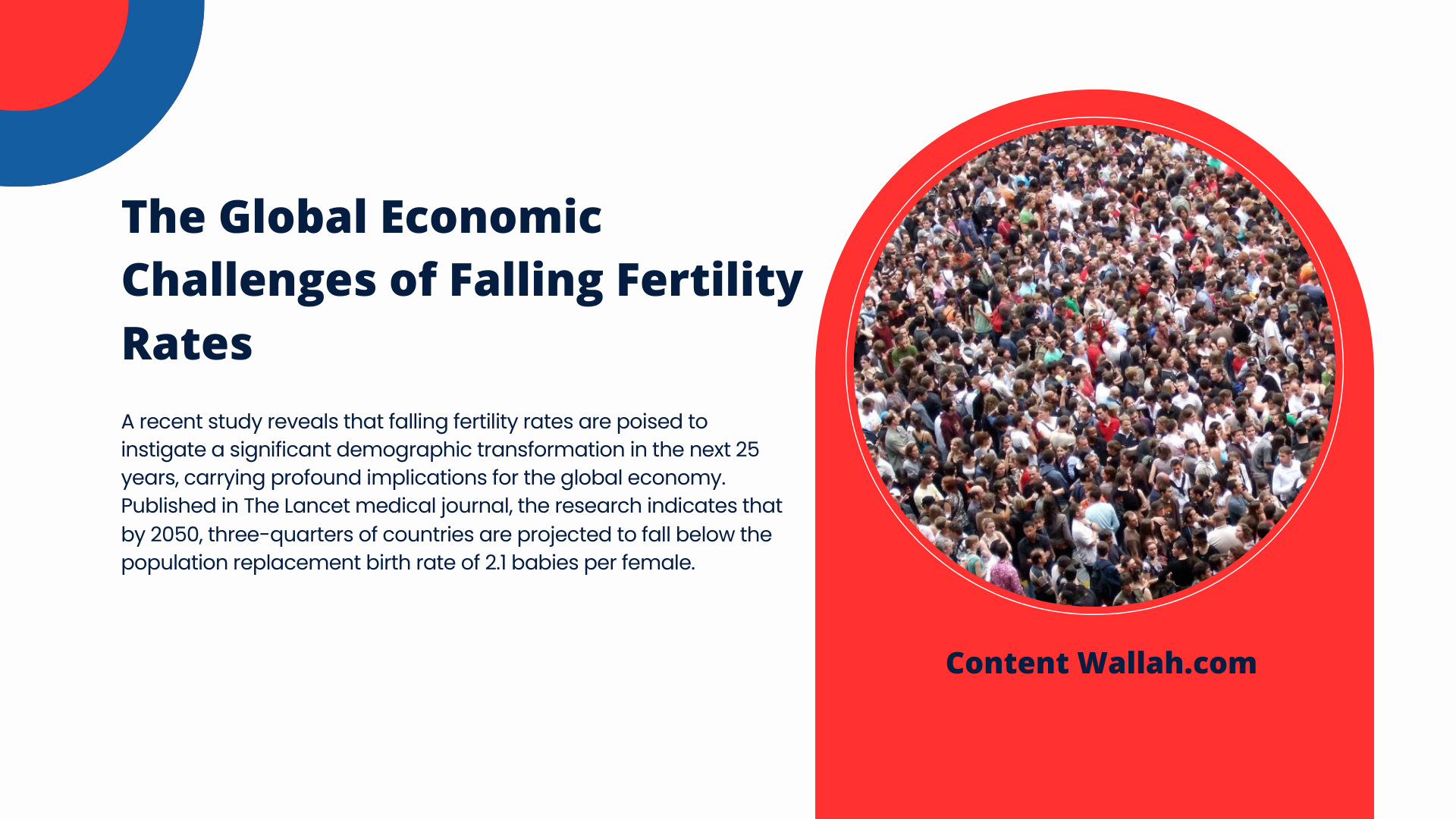
The Global Economic Challenges of Falling Fertility Rates
A recent study reveals that falling fertility rates are poised to instigate a significant demographic transformation in the next 25 years, carrying profound implications for the global economy. Published in The Lancet medical journal, the research indicates that by 2050, three-quarters of countries are projected to fall below the population replacement birth rate of 2.1 babies per female.
Demographic Shifts and Economic Impacts
This demographic shift foretells a shift in global population dynamics, with 49 countries—primarily in low-income regions of sub-Saharan Africa and Asia—expected to bear the brunt of new births. By 2100, only six countries are anticipated to maintain population-replacing birth rates. Such a dramatic demographic landscape is poised to have far-reaching social, economic, environmental, and geopolitical consequences.
Economic Challenges and Technological Advancements
In particular, advanced economies face the challenge of shrinking workforces, necessitating significant political and fiscal interventions. Despite technological advancements, such as artificial intelligence (AI) and robotics, which may mitigate the economic impact of declining workforces in certain sectors, challenges persist. Dr. Christopher Murray, a lead author of the report, highlights the potential economic ramifications, emphasizing that without liberal migration policies, nations grappling with declining workforces will encounter numerous obstacles.
The Divergence Between High-Income and Low-Income Countries
The study underscores a stark divergence between high-income and low-income countries regarding fertility rates. While birth rates continue to decline in high-income countries due to various factors, including increased female workforce participation, low-income countries experience rising birth rates. Sub-Saharan Africa is projected to account for half of all new births by the turn of the century, indicating a significant demographic shift.
Implications for Policy and Negotiations
Amidst these demographic changes, poorer countries may find themselves in a stronger negotiating position regarding migration policies, particularly as countries face heightened exposure to the effects of climate change. However, the economic impact of these demographic shifts remains uncertain, underscoring the need for further research and proactive policy measures to address the challenges posed by falling fertility rates.
In conclusion, the global economy stands at a critical juncture as falling fertility rates reshape demographic landscapes worldwide. Addressing the economic implications of these shifts requires coordinated efforts, innovative solutions, and a nuanced understanding of the complex interplay between demographics, technology, and policy.





